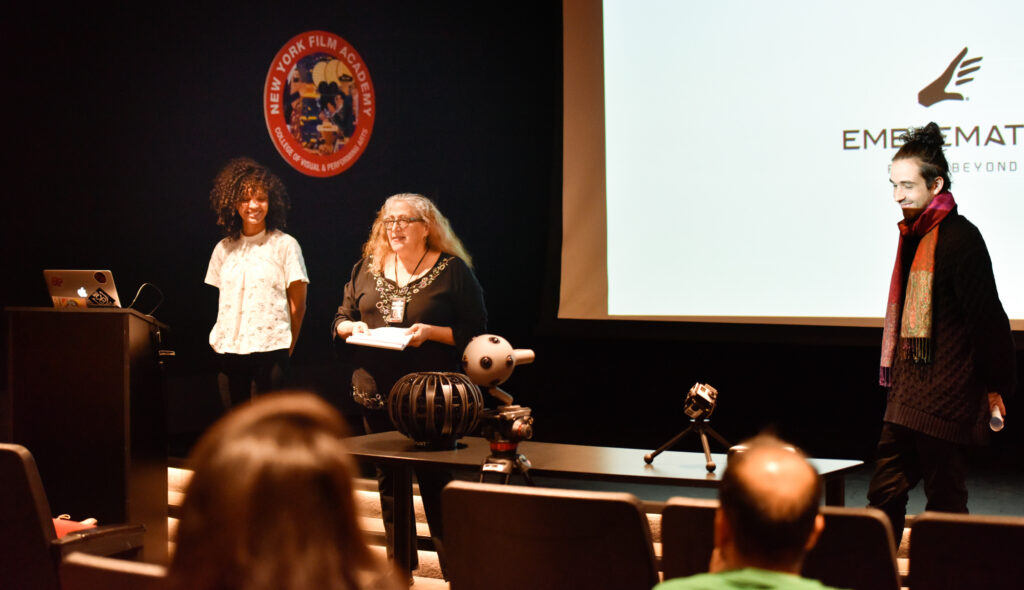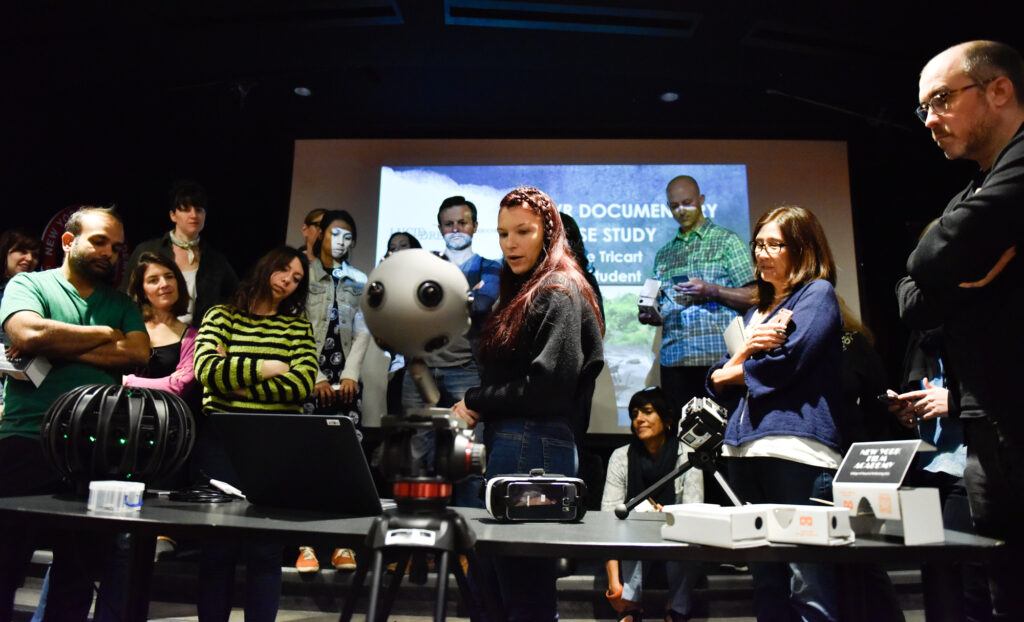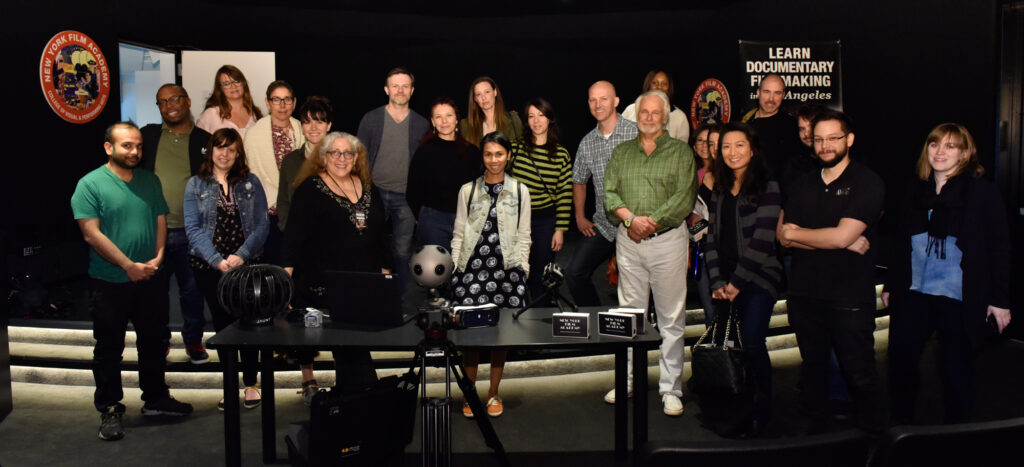This past week the New York Film Academy sponsored a special event for members of the International Documentary Association (IDA) at the NYFA’s Los Angeles Campus. Entitled, VR 101 for Documentary, the workshop was moderated by VR Director and Cinematographer Celine Tricart and featured speakers from ground-breaking VR production company The Emblematic Group, and a VR camera demo from AbelCine, a leading provider of equipment and services to the production, broadcast and new media industries.

Virtual Reality has been threatening to conquer the gaming world for decades but new cellphone technology used with inexpensive VR viewers like the Google Cardboard have allowed for first widespread distribution of Virtual Reality projects, particularly documentaries. Platforms like the New York Times, OpDocs, Jaunt VR and Frontline VR, are releasing new material often called “immersive journalism.” The goal of NYFA’s VR Workshop was to allow IDA documentarians to “look under the hood” of VR to begin to understand what it takes to direct, produce and edit in this new medium.
In VR and all 360-degree formats virtually all the film grammar developed over one hundred years of “flatties” or 2-dimensional films do not apply. No cutting to a close-up or a wide shot, in fact not much cutting at all for fear of inducing motion sickness in the viewer. All the “tricks” filmmakers use to direct the attention of the viewer are not possible in a 360-degree universe where the viewer decides what to look at when, and to some extent for how long.

Using sound and light to direct the viewer’s attention, defining the difference between 360 video and VR, and creating a new cinematic language were key talking points for the speakers. Senior Producer of The Emblematic Group Cedric Gamelin and Marketing Manager Ivana Coleman expounded on the possibilities of storytelling in this new medium, showing the audience examples of the Emblematic Group’s work in both live action and animated VR documentary shorts. Nicholas Samero and Sean George of AbelCine demonstrated a number of different VR cameras, from the 2-camera Kodak 4K 360 to the 8 -camera Nokia Ozo, and the 24-camera Jaunt VR.
The afternoon was spent in a NYFA edit room where Tricart took participants through the post –production workflow for VR that includes downloading the media from all of the cameras, stitching the images from the various cameras together, editing scenes together, and outputting the edited media. Then each participant was able to view the VR scenes they had cut together.

Barbara Multer-Wellin, Chair of Documentary for the Los Angeles campus recommend checking out the Op-Docs Video Channel, Jaunt VR, and Frontline VR to begin exploring Virtual Reality Documentaries. Multer-Wellin has already begun to include elements of VR in her classes and hopes to expand the program soon.
When asked what she learned from the presentation Multer-Wellin said, “We (filmmakers) are used to having a lot of control. In VR, you’re giving the audience the control with the ability to make cuts themselves with their eyes. This is exciting but it is also kind of scary.” Celine Tricart said she loves VR because. “It’s like the very beginning cinema. All the rules have been thrown out the window and we’re making it up as we go along.”